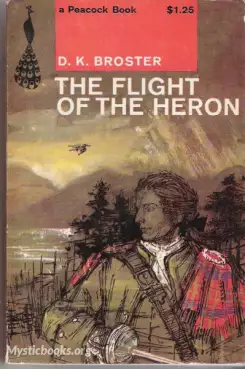
Timeline
Title
Country/Nationality
D. K. Broster
Dorothy Kathleen Broster usually known as D. K. Broster, was an English novelist and short-story writer. Her fiction consists mainly of historical romances set in the 18th or early 19th centuries. Her best known novel is The Flight of the Heron (1925), the first of a Jacobite trilogy.
Dorothy Kathleen Broster was born on 2 September 1877, to Thomas Mawdsley Broster and Emilie Kathleen Gething, at Devon Lodge (now Monksferry House) in Grassendale Park, Garston, Liverpool, on the banks of the Mersey. "And to this she probably owed her life-long interest in the sea." When she was 16, the family moved to Cheltenham, where she attended Cheltenham Ladies' College. From 1896 to 1898 she read history at St Hilda's College, Oxford, where she was one of the first students, although at this date women were not awarded degrees.
Broster served as secretary to Charles Harding Firth, (Regius Professor of History from 1904 to 1925) for several years, and collaborated on several of his works. Her first two novels were co-written with a college friend, Gertrude Winifred Taylor: Chantemerle: A Romance of the Vendean War (1911) and The Vision Splendid (1913) (about the Tractarian Movement).
During the First World War she served as a Red Cross nurse with a voluntary Franco-American hospital, but she returned to England with a knee infection in 1916. After the war, she and a friend, Gertrude Schlich (daughter of Wilhelm Philipp Daniel Schlich, first professor of forestry at Oxford), moved near to Battle, East Sussex, where Broster worked full-time as a writer. She was in the first batch of women to receive her Bachelor of Arts and Master of Arts in 1920 at Oxford.
The Yellow Poppy (1920), about the adventures of an aristocratic couple during the French Revolution, was later adapted by Broster and W. Edward Stirling for the London stage in 1922. She produced her bestseller about Scottish history, The Flight of the Heron, in 1925. Broster stated she had consulted eighty reference books before beginning the novel. She followed it up with two successful sequels, The Gleam in the North and The Dark Mile. She wrote several other historical novels, much reprinted in their day, although this Jacobite trilogy, inspired by a five-week visit to friends in Scotland and featuring the dashing Ewen Cameron as hero, remains the best known.
During her career, Broster wrote several poems, articles and, notably, short stories, which were collected in A Fire of Driftwood and Couching at the Door. The title story of Couching at the Door involves an artist haunted by a mysterious entity. Other supernatural tales include "Clairvoyance", (1932) about a psychic girl, "Juggernaut" (1935) about a haunted chair, and "The Pestering", (1932) focusing on a couple tormented by a supernatural entity.
Broster avoided personal publicity. During her lifetime, many of her readers wrongly assumed she was both male and Scottish. She died in Bexhill Hospital on 7 February 1950, aged 73.
Books by D. K. Broster

The Flight of the Heron
This is the story of an unlikely friendship between Keith Windham, a career soldier in the British Army, and a young Highland chieftain who follows Bonnie Prince Charlie in his bid for the throne.

Mr Rowl
Raoul des Sablières, a French parole prisoner in England during the Napoleonic Wars, becomes enmeshed in a complicated tangle where his honour conflicts with his parole, and is sent to prison. Juliana Forrest, for whose sake he broke his parole, does...

The Wounded Name
It tells the story of a young girl named Veronica who moves to Scotland to attend a boarding school. The book was written in 1917 and remains an important work of literature today. Veronica is haunted by a tragic event from her past and struggles to...

The Gleam in the North
In the haunting beauty of the Scottish Highlands, secrets carve through the mists like ancient runes. Uncover the enigmatic tale that is "The Gleam in the North" by D. K. Broster, a journey into a world where destiny and desire entwine. Set against t...